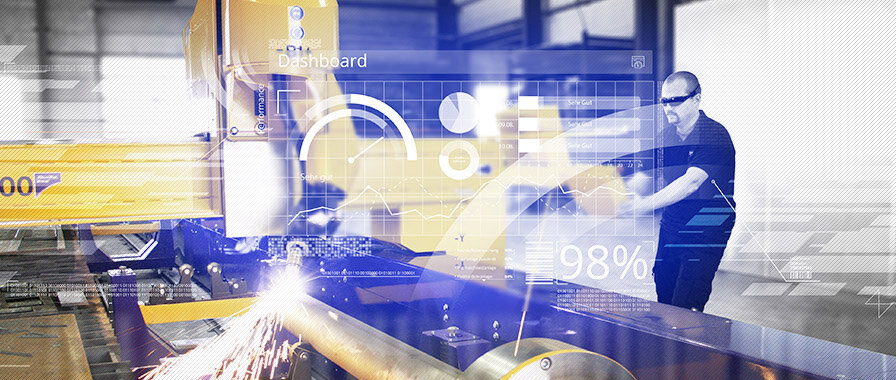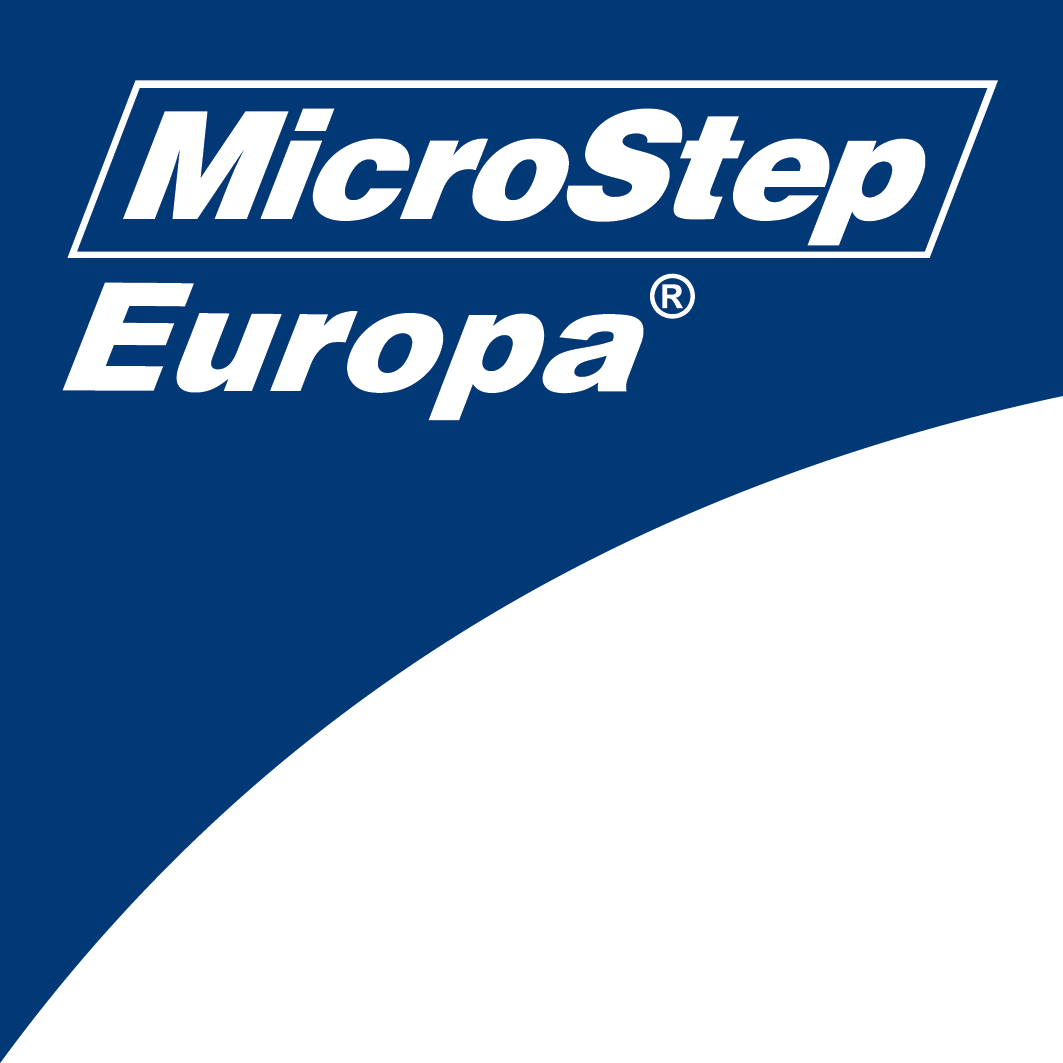
The DRM panel cutting system enables portal widths up to 24 meters
CNC cutting systems for large-scale applications
MicroStep partners with global welding automation expert Pemamek for advanced shipyard projects
Published 18.04.2019 | Erich Wörishofer
As a manufacturer known for innovations and customer-driven R&D projects, MicroStep has a rich history of supplying the shipbuilding and offshore industries with emerging cutting-edge technologies. Over almost two decades the company has supplied numerous machines to well-established names in the industry such as STX, Damen, Vard/Fincantieri, Royal IHC, Lürssen, Meyer, Keppel and many more, a majority of which were combined plasma bevel cutting machines for automated welding preparation and sheet marking. Several shipyard enterprises became our global partners and enthusiastic cooperators in development of new solutions that make their production more reliable, safer and efficient in the long run. Among equipment and automation solutions developed for the demanding shipyard environment were: automatic plate alignment via laser sensor, management of working zones of cutting machine with an interface for an external automatic crane for automatic loading/unloading of material, barcode and QR code marking, Machine Production Management (MPM) software suite and also our well-known ACTG® system for auto-calibration of beveling tool stations.
But it wasn’t until 2014 that MicroStep was able to participate in the shipbuilding’s premium cutting application – automated panel lines. Thanks to the partnership with the globally operating Finnish welding and production automation provider Pemamek, whole new application horizons have opened up for MicroStep.
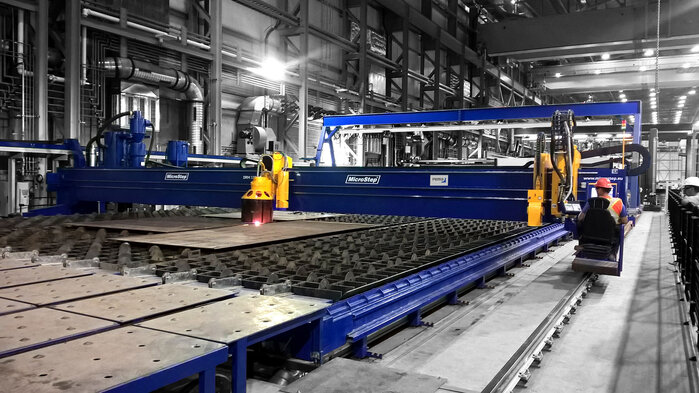
For shipyards around the world, MicroStep provides cutting solutions on automated production lines for the manufacture of panels. The cutting systems are able to cut extremely large parts with dimensions of up to 24 x 24 meters. The picture shows a cutting system at the Canadian shipyard Irving with a 16 meter wide portal.
Cutting of large-scale welded panels
One of the prominent manufacturing application areas in shipbuilding is production of large-scale panels with welded stiffening structures that are used to build decks and bulkheads of a ship. In modern shipyards, these panels are produced by used fully automated and robotized high-tech flat panel lines consisting of several gantries that provide the technologies for welding of single sheets to make a panel and subsequent cutting and marking processes, positioning and welding of stiffening beams and finalizing of the panel structures. Panel lines can be integrated directly into the yard’s design- and manufacturing-data systems. Modern panel lines produce high-quality prefabricated components and subassemblies that allow for high-speed welding, even utilization of hybrid laser welding processes.
MicroStep was chosen to deliver the cutting part of panel lines – a robust DRM-PL gantry with effective cutting widths as big as 24 m. Apart from the sheer
machine size that implies high-end design and manufacturing coupled a powerful drive-motion system, the peculiarity in this case is in the technology: the thickness of the panel as well as its surface levels can vary as the single plates comprising the panel are of different thickness. Besides the usual cutting heads (plasma or oxyfuel rotators) which enable bevel cutting of V-, X-, Y- and K-cuts, DRM-PL machines are equipped with a blasting or grinding unit and a marking tool. Blasting head is used to clean the primer from certain areas on the workpiece where, subsequently, stiffening beams are welded.
The blasting head has an integrated plasma marker to mark synchronization lines for future positioning of the stiffeners. Finally, an inkjet marker is used to print descriptions and technological marks.
Advanced features for precise panel processing
Panel cutting machines need to have several special features. For example, the starting point of cutting has to be set in relation to the position of welds on the panel since the finished product has exactly defined weld positions. Therefore, the machines are equipped with a linear laser scanner to identify of welds in any direction. Another feature is the simultaneous blasting/grinding and plasma marking with the plasma marking torch, which can rotate automatically around the blasting head to enable marking in different directions.
Plates of varying thicknesses, which make up the panels, and the welds between them require complex control of the plasma cutting process. Metal plates of different thicknesses require different cutting parameters such as cutting speed and current. The borders between different sheet thicknesses are linear with surface inclinations ranging from 1:4 to 1:3 so the parameter change is not sudden but linearly interpolated. The most complicated issue with these machines is cutting height control. The classic height control according to measured arc voltage is not enough in this case. If the border is on the top side of the panel, the cutting height is controlled in a robotic mode according to the defined shape of the weld. After a transition to a new thickness, new parameters first need to be measured by the control system and only then the height control according to arc voltage can be turned on again. Furthermore, when crossing welds, the height control needs to be deactivated so that the cut contour is not deformed.
For the Canadian shipyard Irving Shipbuilding Inc. MicroStep implemented a panel cutting solution for shipbuilding with a 16 meter wide portal.

EXPERIENCE OUR SYSTEMS LIVE
in the CompetenceCenter South or North
- All four cutting technologies (laser, plasma, oxyfuel, waterjet)
- Innovative automation systems
- The latest solutions for bending and deburring
- Industry 4.0 demo factory
- Easy to reach: in the south and north of Germany
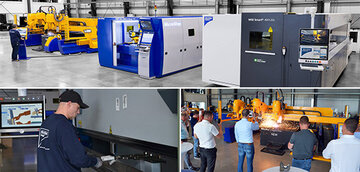
 MSE SmartFL
MSE SmartFL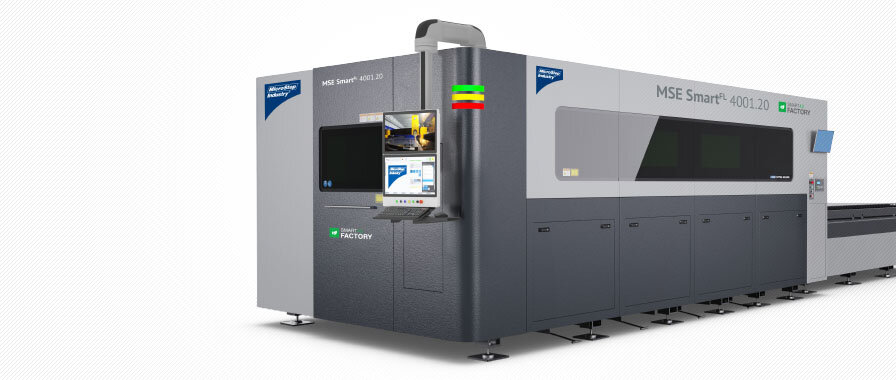



 MSE CubeFL
MSE CubeFL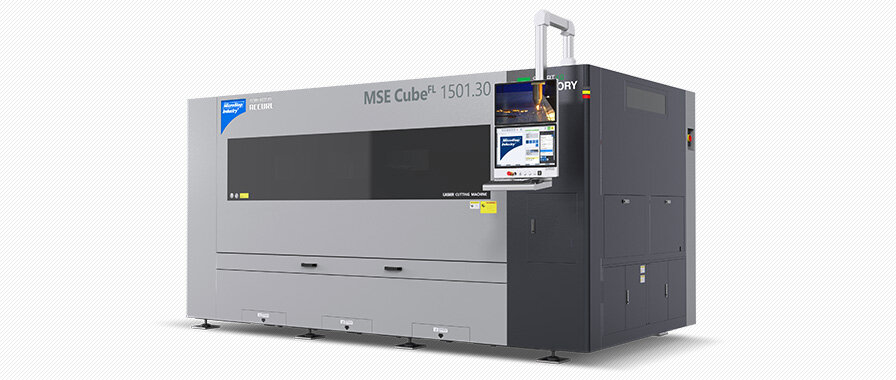
 MSE TubeFL
MSE TubeFL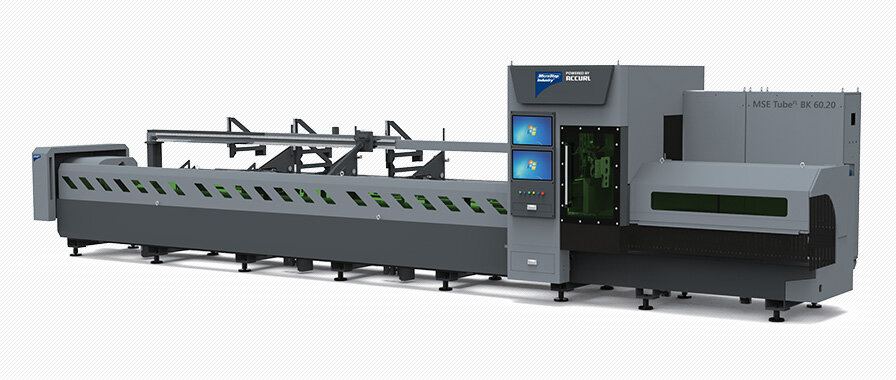






 MSF Compact
MSF Compact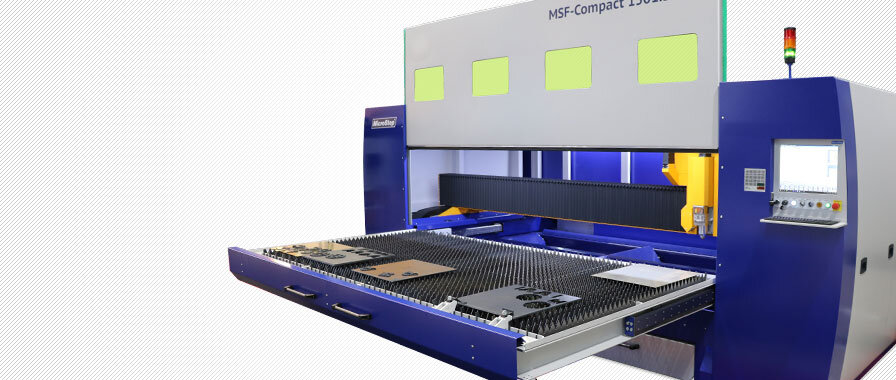

 MSF Cut
MSF Cut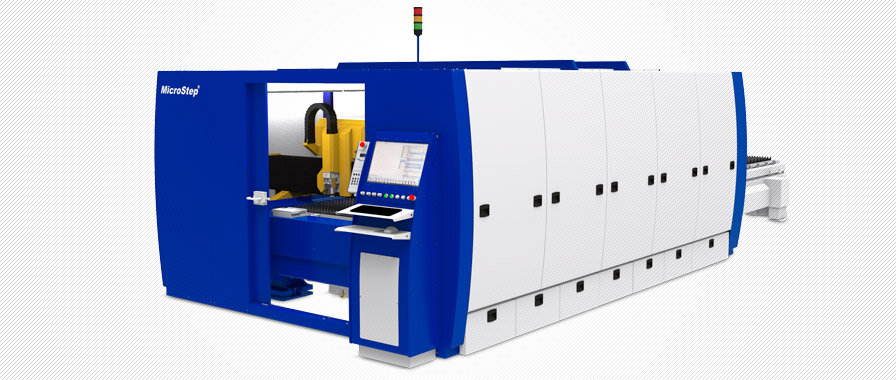
 MSF Pro
MSF Pro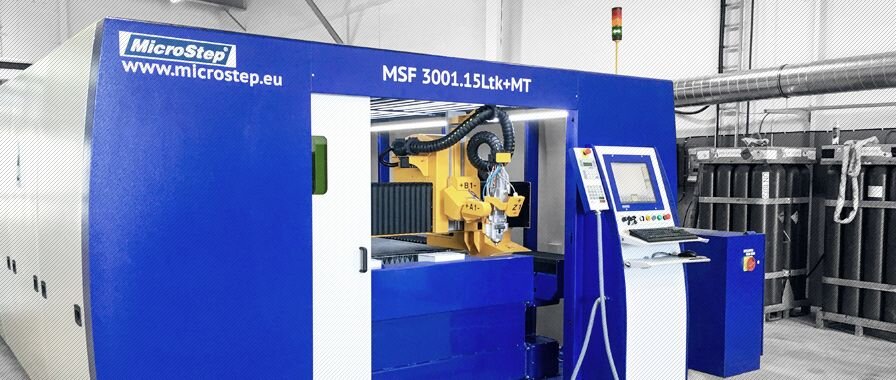




 MSF Max
MSF Max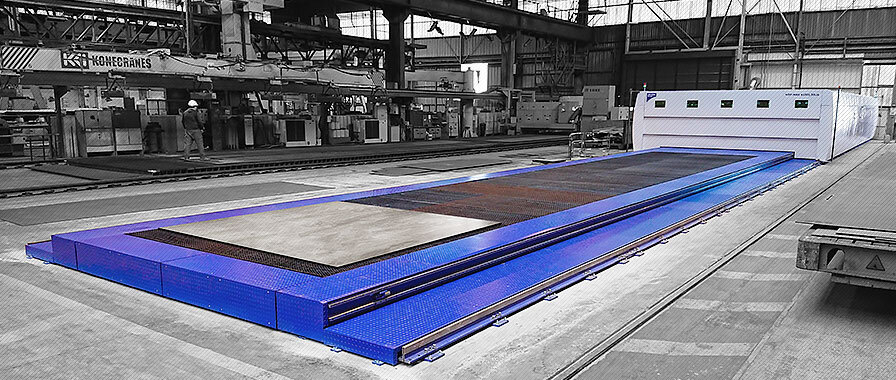
 MSF Pipe
MSF Pipe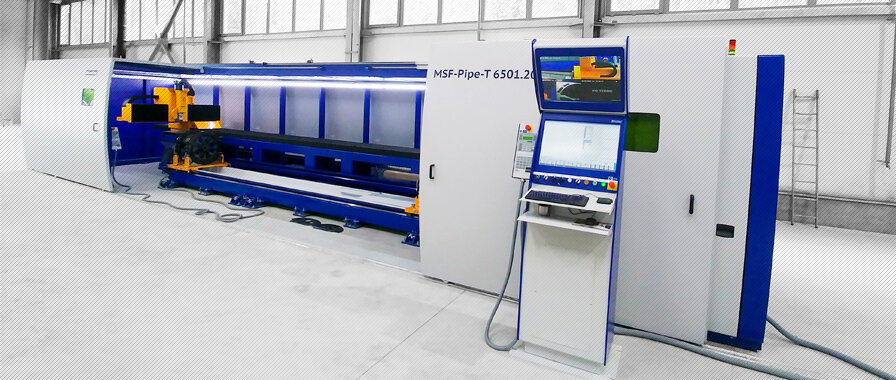
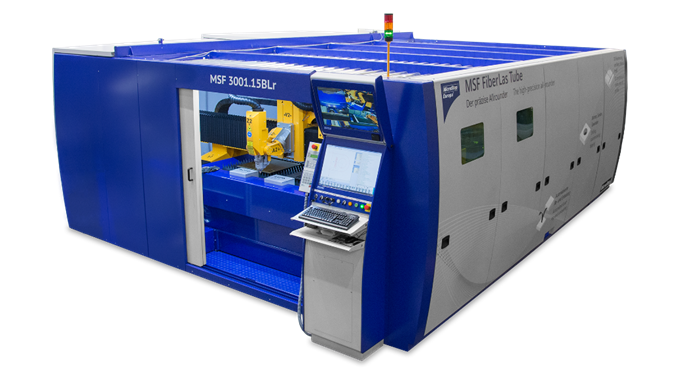
 MasterCut Compact
MasterCut Compact
 MasterCut
MasterCut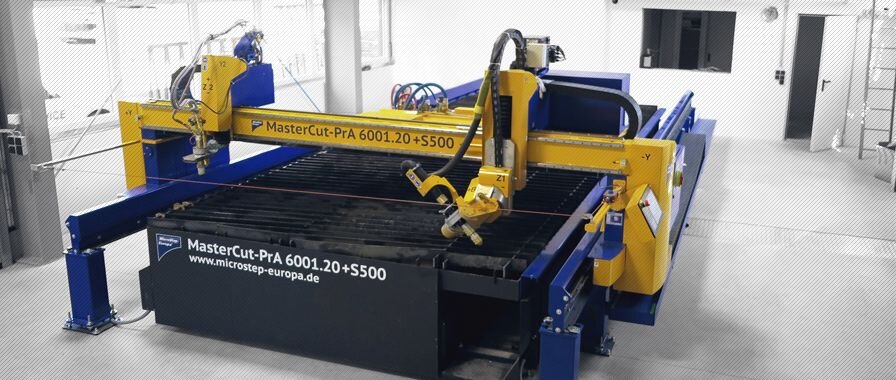
 MG
MG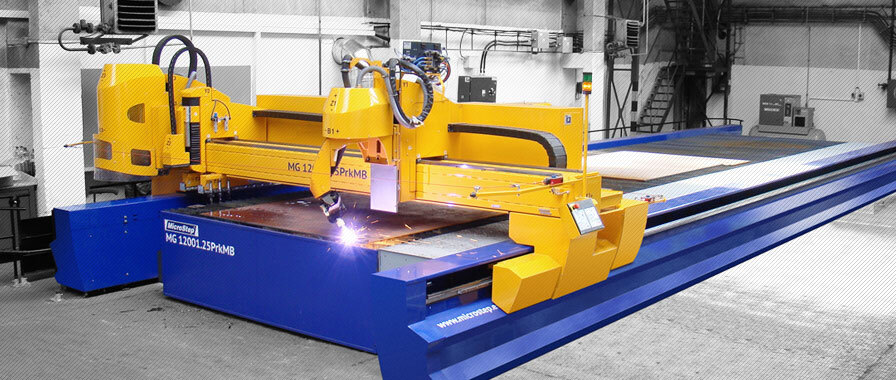

 DRM
DRM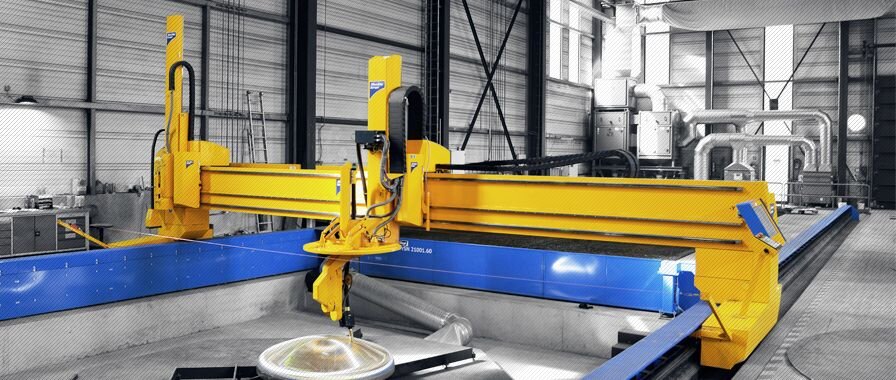
 CombiCut
CombiCut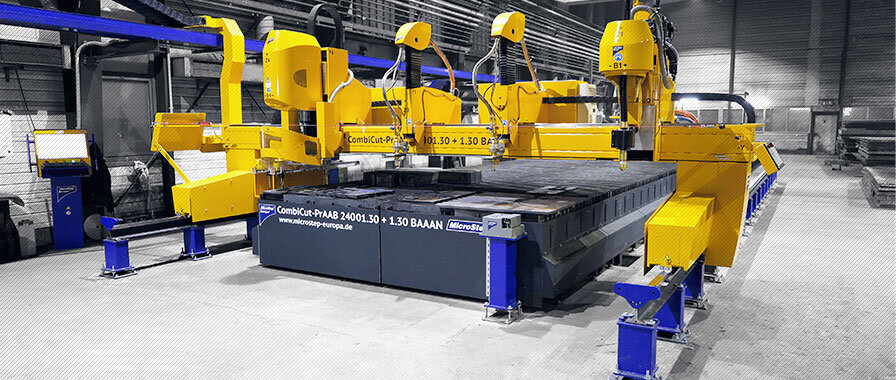
 DS
DS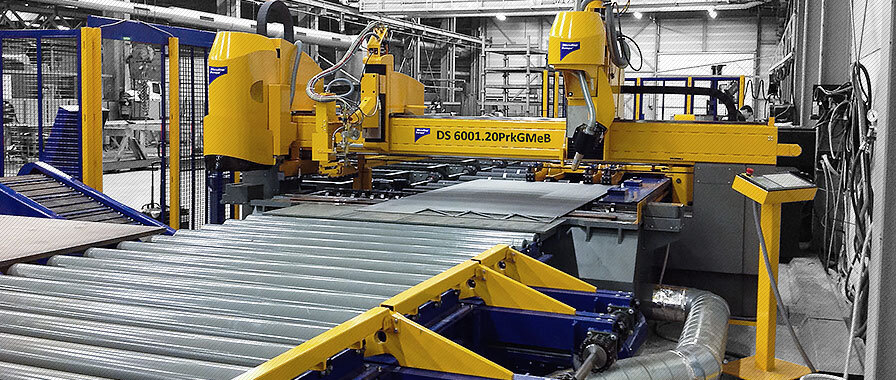
 CPCut & PipeCut
CPCut & PipeCut
 ProfileCut
ProfileCut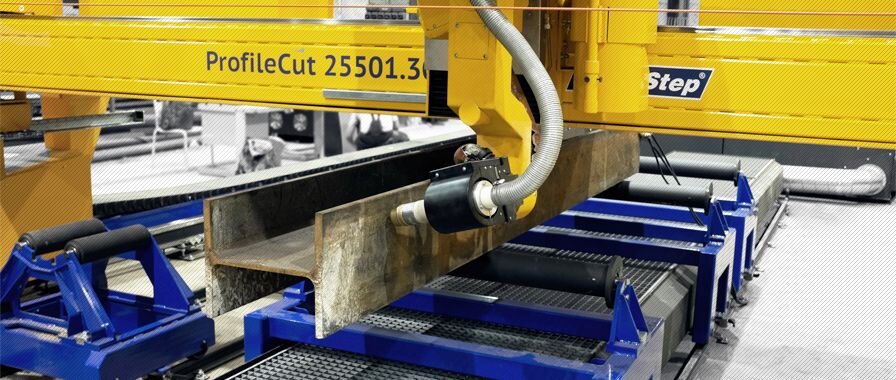

 EasyCut
EasyCut

 WaterCut
WaterCut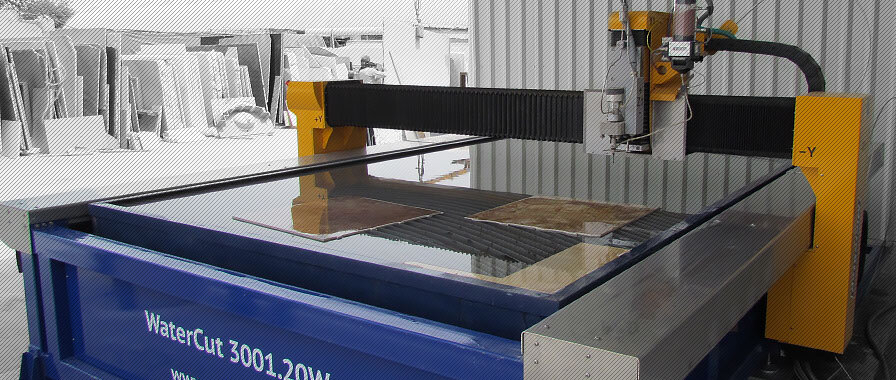
 AquaCut
AquaCut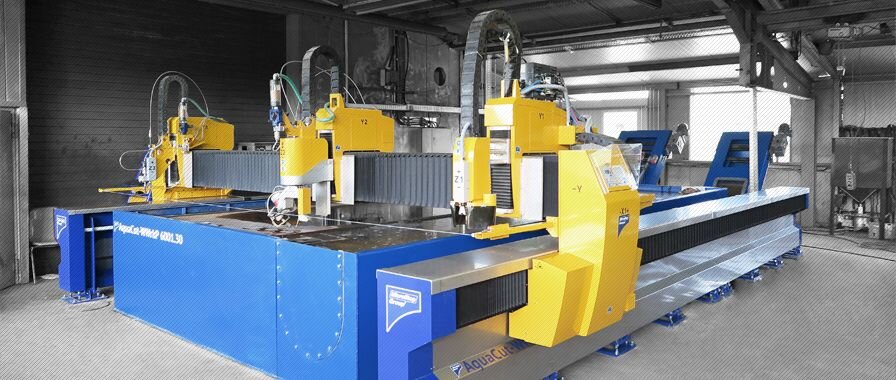
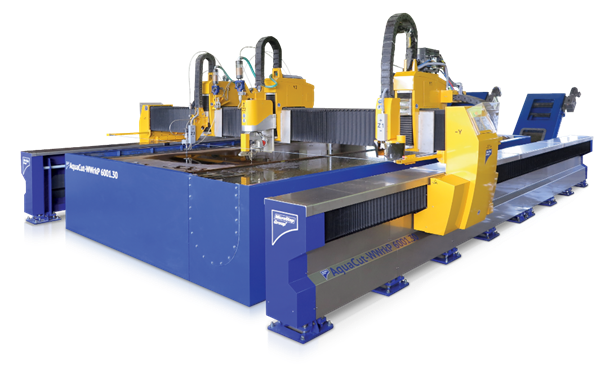
 SMART
SMART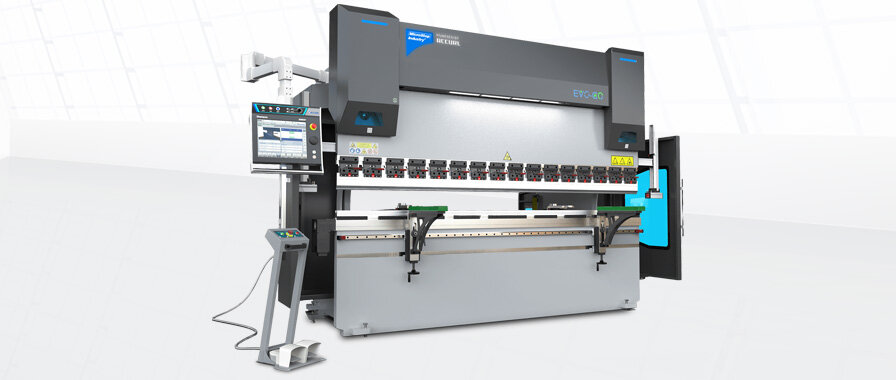

 eB ULTRA
eB ULTRA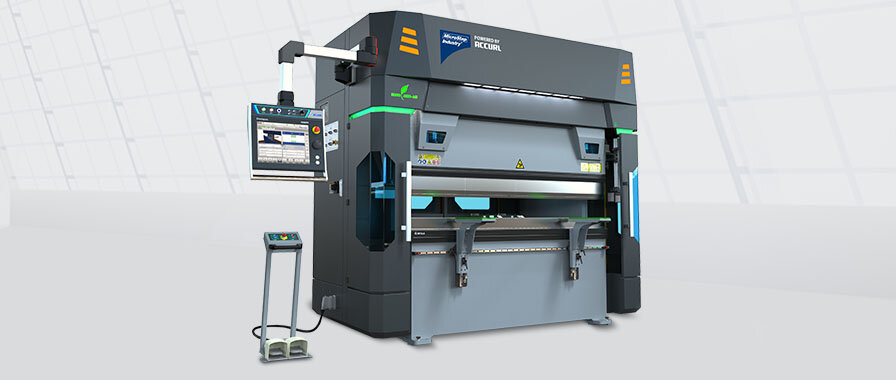
 EUROMASTER
EUROMASTER
 GENIUS
GENIUS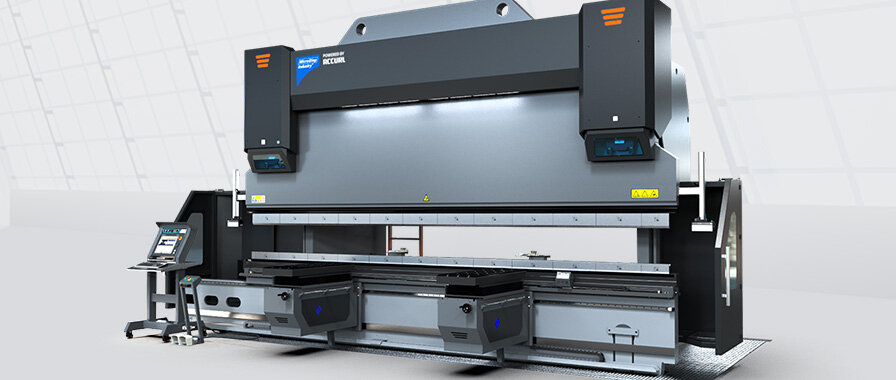

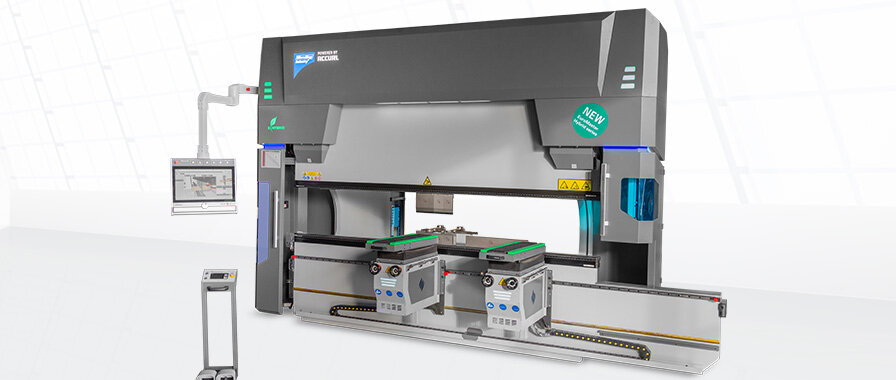
 MSLoad, MSTower, MSSort
MSLoad, MSTower, MSSort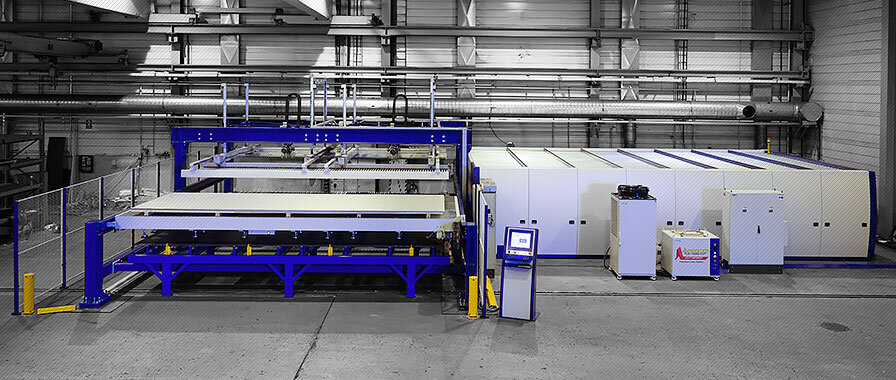



 MSLoop
MSLoop
 MSFeed
MSFeed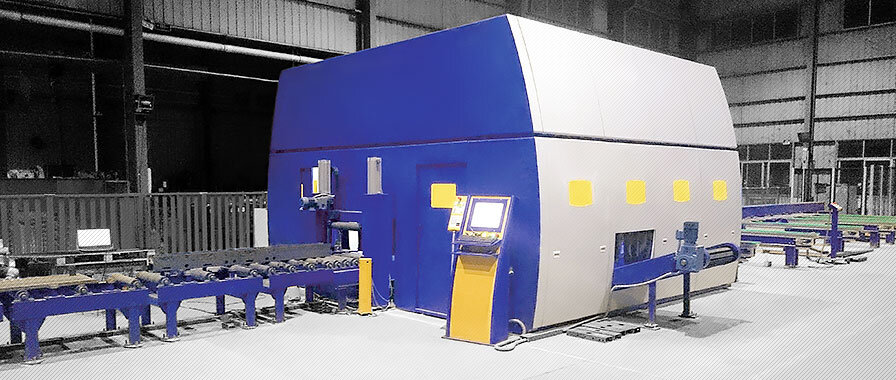
 Digitalization
Digitalization